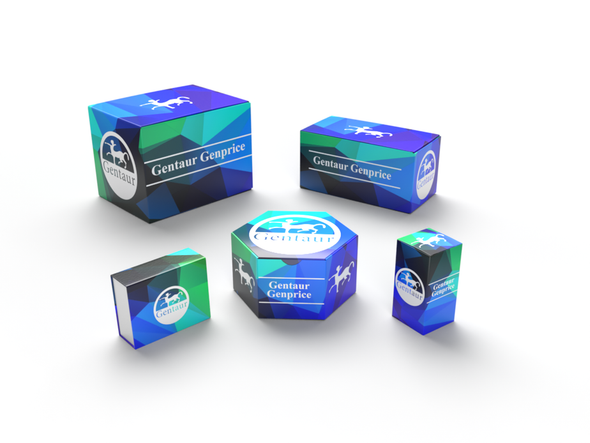Description
EFNB3 Antibody | 18-869 | Gentaur UK, US & Europe Distribution
Host: Rabbit
Reactivity: Human
Homology: N/A
Immunogen: Recombinant fusion protein containing a sequence corresponding to amino acids 28-226 of human EFNB3 (NP_001397.1) .
Research Area: Neuroscience
Tested Application: WB
Application: WB: 1:1000 - 1:4000
Specificiy: N/A
Positive Control 1: SH-SY5Y
Positive Control 2: HT-1080
Positive Control 3: SW480
Positive Control 4: SKOV3
Positive Control 5: N/A
Positive Control 6: N/A
Molecular Weight: Observed: 36kDa
Validation: N/A
Isoform: N/A
Purification: Affinity purification
Clonality: Polyclonal
Clone: N/A
Isotype: IgG
Conjugate: Unconjugated
Physical State: Liquid
Buffer: PBS with 0.02% sodium azide, 50% glycerol, pH7.3.
Concentration: N/A
Storage Condition: Store at -20˚C. Avoid freeze / thaw cycles.
Alternate Name: EFL6, EPLG8, LERK8, ephrin-B3, EPH-related receptor transmembrane ligand ELK-L3, eph-related receptor tyrosine kinase ligand 8
User Note: Optimal dilutions for each application to be determined by the researcher.
BACKGROUND: EFNB3, a member of the ephrin gene family, is important in brain development as well as in its maintenance. Moreover, since levels of EFNB3 expression were particularly high in several forebrain subregions compared to other brain subregions, it may play a pivotal role in forebrain function. The EPH and EPH-related receptors comprise the largest subfamily of receptor protein-tyrosine kinases and have been implicated in mediating developmental events, particularly in the nervous system. EPH Receptors typically have a single kinase domain and an extracellular region containing a Cys-rich domain and 2 fibronectin type III repeats. The ephrin ligands and receptors have been named by the Eph Nomenclature Committee (1997) . Based on their structures and sequence relationships, ephrins are divided into the ephrin-A (EFNA) class, which are anchored to the membrane by a glycosylphosphatidylinositol linkage, and the ephrin-B (EFNB) class, which are transmembrane proteins. The Eph family of receptors are similarly divided into 2 groups based on the similarity of their extracellular domain sequences and their affinities for binding ephrin-A and ephrin-B ligands.










